Jewelry Die
At SuperbMelt's factory, we have a variety of Jewelry Dies and jewelry manufacturing equipment to assist customers in completing a series of jewelry processing and casting tasks.


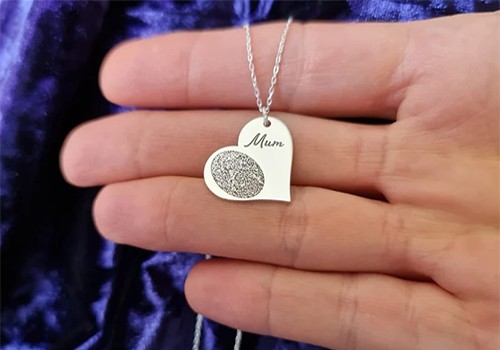
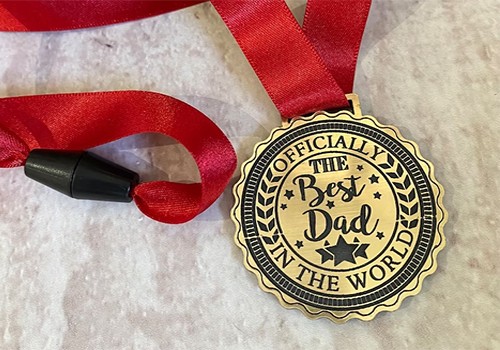
SuperbMelt, as a Jewelry Die manufacturer, possesses top-notch manufacturing technology to assist customers in creating various jewelry pieces, including gold rings, gold bracelets, gold pendants, and gold necklaces with Jewelry Dies.
Jewelry Die is a crucial stamping tool used in the production of gold, silver, copper, alloys, or other metal jewelry. Customized logos, text, and shapes are imprinted onto the Jewelry Die, and these patterns are then transferred to both sides of the metal jewelry.
Jewelry Dies are crafted according to customer specifications for different shapes of jewelry, with the surface matching the size of the jewelry to be stamped. Two such jewelry Dies are needed to cast metal jewelry, one with a front (obverse) design and the other with a back (reverse) design.
Installed in Superbmelt’s automatic hydraulic stamping machine, Jewelry Dies efficiently and effectively stamp on jewelry. No lubricants are used during casting as they are non-compressible.
We manufacture jewelry Dies and jewelry samples for customers before shipping.
Superbmelt provides customers with all the jewelry casting equipment for various gold and silver jewelry-making processes and offers training and guidance to our clients.
Our jewelry dies and jewelry production tools at SuperbMelt are made to help clients finish a range of casting and jewelry processing jobs. We have a range of Jewelry Dies at our facility to accommodate various manufacturing and design needs.
Principal attributes and benefits:
- High Customization: Jewelry Dies may be made to order in a variety of sizes, shapes, and patterns to meet precise design specifications for the creation of jewelry.
- Various Design Options: The molds can accommodate a broad variety of forms and designs, which enables them to meet a variety of market demands.
- Superior Material: Made from strong alloys or premium metals, the molds guarantee longevity and toughness, supporting prolonged durations of heavy use.
- Enhanced Production Efficiency: Jewelry Dies, when installed on the appropriate equipment, help jewelry producers increase overall efficiency by streamlining production processes.
- Support for Intricate Designs: The molds enable complex and inventive designs, giving jewelry a distinctive look and form.
- Strict Quality Control: Throughout the production process, strict quality control procedures are put in place to guarantee that every piece of jewelry satisfies design criteria.
- Sample Provision for clients: SuperbMelt gives jewelry samples to clients before shipment to guarantee that they are happy with the finished items.
The primary application scope of SuperbMelt’s Jewelry Dies is in the manufacturing of various types of jewelry, including gold rings, gold bracelets, gold pendants, and gold necklaces. These dies are essential stamping tools used in the production of jewelry made from gold, silver, copper, alloys, or other metal materials.
The Jewelry Dies play a crucial role in the customization of jewelry by imprinting different logos, text, and shapes onto the metal surfaces. They are designed based on customer requirements, creating molds for specific jewelry designs. Each die set typically consists of two dies—one with the front (obverse) design and the other with the back (reverse) design.
Installed in SuperbMelt’s automatic hydraulic stamping machines, these dies efficiently and effectively stamp jewelry during the casting process. No lubricants are used during casting as they are non-compressible.
In addition to providing Jewelry Dies, SuperbMelt offers a comprehensive range of jewelry casting equipment and provides training and guidance to customers in various gold and silver jewelry-making processes.
The following actions are involved in customizing SuperbMelt’s Jewelry Die:
- Creating the Jewelry Die: Customers supply specific specifications for jewelry designs, such as forms, text, and patterns. Based on these specifications, SuperbMelt develops design drawings for the Jewelry Die.
- Making the Die Mold: Custom Jewelry Die molds are made in accordance with the design drawings using premium metal or strong alloy materials. Every Die mold usually has designs on both the front and back.
- Preparing Raw Materials: Blanks made of gold, silver, copper, alloys, and other materials are used as raw materials for making jewelry.
- Installing the Die Mold: SuperbMelt’s automated hydraulic stamping machine receives the personalized Jewelry Die mold, which guarantees correct front and rear mold alignment.
- Jewelry Stamping: The design from the Die mold is stamped into the raw material blanks by the hydraulic stamping machine, which is set to high pressure, creating the unique jewelry forms.
- Finishing and Polishing: To improve the jewelry’s look, more steps are taken after stamping, such as cutting away extra material and polishing and finishing.
- Quality Control: Strict quality control procedures are used to examine the look, size, and texture of every stamped jewelry item to make sure that it complies with norms and regulations for design.
- Jewelry Samples: To guarantee customer satisfaction with the finished product, SuperbMelt gives clients samples of the stamped jewelry after passing quality inspections.

2 years warranty
The warranty for our machine is one year longer than the warranty provided by other factories.

Strong service team
We will give response within 24 hours against your problem by our professional engineer.
Why SuperbMelt Jewelry Die
As a professional Jewelry solution supplier, it is our responsibility to provide you with the highest quality Jewelry Die
High Quality
Any Question About SuperbMelt Jewelry Die Solution
Superbmelt’s professional technical team and sales team are at your service
(7/24hours service)
About SuperbMelt Jewelry Die Guide
Origin of Jewelry Die
The need for accuracy and consistency in the creation of jewelry can be linked to the invention of jewelry molds. Molds were created and used because different jewelry pieces required precise designs, complicated patterns, and minute details.
To put it simply, the history of jewelry molds is closely linked to the quest for accurate, reliable, and efficient means of realizing complex designs in response to the ever-increasing needs of the jewelry industry.
1.1, Why the Need for Jewelry Die
- Precision and Detail: Jewellery frequently has elaborate and complicated designs that need for a very precise handiwork.
- Jewelry dies allow artists to reliably duplicate these fine details, guaranteeing the correctness of the finished items.
- Reproduction Consistency: Reproduction consistency is essential when creating several pieces of the same design.
- Jewelry dies offer a consistent and repeatable way to make identical pieces that are consistent in size, shape, and design.
- Efficiency in Mass Production: Given the market for jewelry goods manufactured in large quantities, production process efficiency is critical.
- Jewelry dies simplify the production process, making it possible to produce a large number of pieces quickly and effectively.
- intricate Patterns and Designs: Jewellery frequently features intricate patterns, textures, and designs.
- Die sets are necessary in order to reliably replicate these detailed components, particularly in the case of jewelry such as pendants, earrings, and rings.
- Material savings: By using molds, waste is reduced since the exact quantity of material required for each item is used.
- This is especially crucial when dealing with precious metals since it makes production more affordable.
- Possibilities for Customization: A vast array of designs and styles may be accommodated using jewelry dies.
- Craftspeople may accommodate a wide range of consumer tastes and market trends through customization.
- Durability of Materials: Steel and alloys are common materials used to make dies, which guarantee their durability and resistance to deterioration during the manufacturing process.
- Time savings: Handcrafted jewelry can take a lot of time to complete.
Jewelry dies drastically cut down on production time, allowing producers to more effectively satisfy consumer demand.
1.2, Materials for Making Jewelry Die
The strength, accuracy, and general performance of jewelry dies throughout the production process are largely dependent on the materials used to create them. The following materials are frequently used to create jewelry dies:
- Tool Steel: Tool steel is a common material used to create jewelry dies that are well-made and long-lasting.
- Because of its superior toughness, wear resistance, and hardness, it may be used again in the production process.
- High-Speed Steel (HSS): HSS steel is renowned for its resilience to elevated temperatures while preserving its hardness.
- When making jewelry dies that must withstand heat and wear throughout the process of creating items made of precious metal, HSS is frequently used.
- Tungsten carbide in particular is highly prized for its remarkable hardness.
- CBN jewelry dies are renowned for their durability and wear resistance, which makes them appropriate for large-scale manufacturing.
- Stainless Steel: Stainless steel provides high strength and resistance to corrosion.
- It is frequently used for jewelry dies because it helps avoid contamination or discoloration, particularly when working with precious metals.
- Alloys made of bronze or brass: A few jewelry dies are made of these materials.
- These materials offer a compromise between affordability and durability and can be selected for certain purposes.
- Beryllium Copper: The excellent strength and conductivity of beryllium copper are well-known.
- It can be applied to jewelry dies where electrical conductivity is a factor, such in some engraving techniques.
- Carbide: Tungsten carbide in particular is prized for its extraordinary hardness.
- Because of its durability and wear resistance, carbide jewelry dies are a good choice for large-scale manufacturing.
- Stainless Steel: This material resists corrosion and has a strong strength.
- Because it helps avoid contamination or discoloration, it is frequently used for jewelry dies, particularly when working with precious metals.
- Alloys made of bronze or brass: These materials are used to make certain jewelry dies.
- These materials, which combine affordability and durability, can be selected for certain uses.
- Beryllium Copper: This metal is well-known for having a high conductivity and strength.
When electrical conductivity is an issue, as it is in some engraving processes, it can be used in jewelry dies.
1.3, Types of Jewelry Die
There are many different kinds of jewelry dies, and each is made for a particular use in the jewelry-making process. The following are typical jewelry die types:
- Blanking Dies: Metal sheets are cut into flat forms or blanks using blanking dies. These blanks are used as the foundation for making jewelry elements.
- Coining Dies: Coining dies are used to precisely imprint patterns or designs into metal blanks. This is frequently employed in the fabrication of medallions, tokens, and coins.
- Embossing Dies: Using an embossing die, metal surfaces may be adorned with raised or three-dimensional patterns. They are utilized to give jewelry objects texture and ornamental aspects.
- Engraving Dies: Specialized instruments called engraving dies are used to etch complex patterns or designs onto metal surfaces. This is typical when making intricate and customized jewelry.
- Die for Piercing: Die for Piercing is used to make holes or apertures in metal sheets. For jewelry components to have elaborate and complex designs, this procedure is necessary.
- Extrusion Dies: Extrusion dies are used to mold metal into predetermined shapes during the extrusion process. Jewelry wire and tubing are frequently made using this method.
- Swaging Dies: By passing metal rods or tubes through a sequence of dies, swaging dies are used to shrink the diameter of the materials. Seamless jewelry components are produced using this technology.
- Drawing Dies: To lower the diameter of metal wire, drawing dies are used in the wire drawing process. This is necessary to produce uniformly fine wire for jewelry.
- Progressive Dies: These dies carry out several tasks during a single press. They are employed in high-volume production procedures like stamping out complex jewelry elements.
- Mold Dies: During the casting process, mold dies are used to mold molten metal into precise shapes. This is frequently utilized to create intricate and ornate jewelry designs.
- Forming Dies: Metal may be bent or shaped into precise shapes using forming dies. They are essential for giving jewelry components their three-dimensional qualities.
- The finished jewelry piece’s qualities, the production method, and the intended design all influence the type of jewelry die that is chosen. A variety of dies can be used to create the complex and varied designs found in jewelry.
Why Choose SuperbMelt Jewelry Die
Being a leading jewelry die maker, SuperbMelt distinguishes itself by providing a wide variety of molds made to customer requirements, creating jewelry samples, providing thorough technical solutions, and guaranteeing quality and effectiveness throughout the whole jewelry production process.
2.1, We Are Die Manufacturers
SuperbMelt is an expert in producing premium dies, offering tailored solutions for a range of uses, including jewelry, medals, and more. As die makers, we take pleasure in meeting the unique demands of our clients by providing accuracy, adaptability, and creative design alternatives.
2.2, Producing Jewelry Samples Through Customized Die
As die makers, SuperbMelt is different since we specialize in making custom jewelry dies for producing elaborate and one-of-a-kind jewelry prototypes. Our dedication to accuracy and personalization allows customers to see the finer points and subtleties of the designs on their jewelry, guaranteeing a smooth transition from concept to real examples prior to mass production.
2.3, Providing Jewelry Casting Technical Solutions
At SuperbMelt, we provide complete technological solutions for jewelry casting, going beyond die production. We provide our clients knowledge and assistance to guarantee the successful casting of their ideas as we lead them through the complex jewelry production process. We are dedicated to providing not just dies but also a whole suite of solutions to attain superiority in jewelry casting.
Conclusion
SuperbMelt, as a jewelry mold manufacturer, stands out in the industry with its outstanding manufacturing technology and comprehensive solutions. Firstly, by delving into the origin of jewelry molds, we understand their significance in ensuring precision, consistency, and efficiency in jewelry production. Secondly, SuperbMelt meets diverse design needs by providing various types of jewelry molds, including cutting, embossing, and engraving, among others. Furthermore, as a mold manufacturer, SuperbMelt not only focuses on mold production but also showcases its personalized and innovative aspects by providing jewelry samples, ensuring complete customer satisfaction before mass production. Most importantly, with its commitment to providing comprehensive jewelry casting technical solutions, SuperbMelt guides customers through the entire process from jewelry design to production, ensuring the successful casting of their unique jewelry. When choosing SuperbMelt as a jewelry mold supplier, customers receive not just molds but a complete set of solutions to guarantee excellence in jewelry production.
1. What is a jewelry die?
A jewelry die, also known as a jewelry mold or stamping die, is a specialized tool used in the jewelry manufacturing process. It is typically made of durable materials such as steel, tungsten carbide, or other alloys. The primary purpose of a jewelry die is to create precise and consistent patterns, shapes, or designs on metal sheets or blanks, which are then used to produce various jewelry pieces.
The die-making process involves crafting a negative image of the desired design into the die material. This negative image is then transferred onto the metal through processes like stamping, embossing, or engraving. Jewelry dies are essential for achieving intricate and detailed designs in mass production, ensuring uniformity across multiple pieces of jewelry.
Different types of jewelry dies serve specific purposes in the jewelry-making process, such as blanking dies for cutting metal sheets, coining dies for imprinting patterns, and embossing dies for adding raised textures. The choice of die depends on the desired design and the specific requirements of the jewelry piece being produced.
2. What is a gold die?
Generally speaking, a gold die is a specific instrument or mold that is used during the making of gold jewelry. It is a high-precision tool used to imprint certain patterns, forms, or designs into gold sheets or blanks. It is constructed of steel, tungsten carbide, or other alloys. A gold die is used to guarantee the precise and reliable creation of intricately detailed gold jewelry.
A hydraulic press or stamping machine is used in tandem with a gold die during the jewelry making process. The intended design is imprinted on the gold substance by pressing the die against it. The mass manufacture of gold jewelry pieces with the same design or motif is made possible by this procedure.
There are many different kinds of gold dies, such as coining dies for exact pattern imprinting, blanking dies for cutting gold sheets, and other specialty dies for certain jewelry-making processes. The quality and complexity of the finished gold jewelry goods are preserved while production efficiency is increased via the use of gold dies.
3. What is a die in metal?
A die is a specialized tool or device used in metalworking and manufacturing for the purpose of shaping, cutting, or forming materials, most often metals. Dies are essential to many industrial operations because they help create exact and uniform forms in large quantities. Depending on the type of tool and its intended use, the name “die” can apply to several kinds of tools:
- Stamping Die: This kind of die is used to create a flat sheet of metal into a certain shape during metal stamping operations. The male (punch) and female (die) components of a stamping die are typically pushed together to distort the metal.
- Using a blanking die, you may cut flat forms out of metal sheets. They work in a manner like to that of a cookie cutter, cutting away portions of material to form the required shape.
- Extrusion Die: In order to form a continuous profile or shape, a metal or alloy is pushed through a die. Extrusion dies are used in this process. The manufacturing of pipes, rods, and other long-formed metal items frequently uses this procedure.
- Drawing Die: A metal wire is dragged through a die to decrease its diameter in wire drawing procedures. Drawing dies are used for this purpose. This is frequently employed in the manufacturing of cables and wires.
- Forging Die: In the forging process, which shapes metal by applying compressive pressures, forging dies are utilized. For instance, dies are used in the drop forging and hot forging procedures to mold metal into predetermined shapes.
- Coining Die: Specialized dies used in the coining process are known as coining dies. Usually, they feature complex patterns and motifs.
- Depending on the specifications of the production process, dies can be created from a variety of materials, such as tool steel, carbide, and other hardened alloys. They are necessary to accomplish metal shaping and forming operations with accuracy, consistency, and efficiency.
4. What is a die ring?
In the context of metalworking or die cutting, a component or portion within a die assembly is often referred to as a “die ring”. Depending on the die’s particular purpose and kind, the phrase may have many meanings. Here are two interpretations that might be made:
- Die Ring in Stamping Dies: A die ring is a circular or ring-shaped part inside the die assembly of stamping dies used for sheet metal stamping or metal shaping. It might be used for a number of purposes, such supporting, aligning, or directing the material being stamped. The die ring may be a component of the entire system that keeps the stamping process accurate and true.
- Die Ring in Cutting Dies: A die ring in cutting dies might be any circular cutting element or die component that is in charge of producing a certain hole or shape. For instance, one of the cutting segments on the die roll of rotary dies used to cut materials such as paper, labels, or thin metal sheets might be a die ring.
- It’s crucial to remember that the precise definition of “die ring” might change depending on the sector, use case, or kind of die being addressed. The phrase is frequently employed in combination with other parts of a die assembly to accomplish a specific task in the shaping, cutting, or forming of materials.
5. What is the difference between die and stamping?
“Die” and “stamping” are terms commonly associated with metalworking and fabrication processes, but they refer to different aspects of the manufacturing process. Let’s clarify the difference between the two:
Die:
- A die is a specialized tool or mold used in manufacturing to shape, cut, or form materials into a specific design or shape.
- Dies can be categorized based on their functions:
- Stamping Dies: Used in metal stamping processes to cut or form metal sheets into desired shapes.
- Extrusion Dies: Employed in extrusion processes to shape materials like metals, plastics, or rubber by forcing them through a die opening.
- Casting Dies: Used in casting processes to shape molten metal into a specific form.
- Drawing Dies: Utilized in wire drawing processes to reduce the diameter of a metal wire.
- Dies can be single-stage (performing one operation) or multi-stage (performing multiple operations in sequence).
Stamping:
- Stamping is a manufacturing process that involves using a die to cut or shape metal sheets into specific forms or parts.
- The process often includes placing a metal sheet between two halves of a stamping die and applying pressure to deform or cut the material.
- Stamping is commonly used in industries like automotive, aerospace, and appliance manufacturing to produce components such as metal panels, brackets, and other sheet metal parts.
In summary, a “die” is the tool or mold used in various manufacturing processes, while “stamping” is a specific manufacturing process that employs a die to shape or cut materials, especially metal sheets. Dies are versatile tools used in a range of processes, and stamping is just one application of dies in metalworking.
6. What is a die in metal stamping?
In metal stamping, a die refers to a specialized tool or mold used to shape, cut, or form metal sheets into specific designs or shapes. Metal stamping is a manufacturing process that involves placing a metal sheet between two halves of a stamping die and applying pressure to deform or cut the material.
The metal stamping die typically consists of two parts:
Punch: The punch is the upper part of the die that applies force to the metal sheet. It may have a shape that corresponds to the desired design or cutout.
Die Cavity: The die cavity is the lower part of the die and has a negative impression of the desired shape. When the punch presses the metal sheet into the die cavity, the material takes on the shape of the die.
Metal stamping dies can be categorized based on their functions:
- Blanking Dies: Used to cut out flat pieces, blanks, from a metal sheet.
- Piercing Dies: Employed to create holes or openings in the metal sheet.
- Forming Dies: Used to bend or deform the metal into a desired shape.
- Drawing Dies: Used in the drawing process to reduce the diameter of a metal sheet or wire.
The choice of the type of stamping die depends on the specific requirements of the final product. Metal stamping is widely used in industries such as automotive, aerospace, electronics, and appliance manufacturing to produce a variety of metal components and parts.



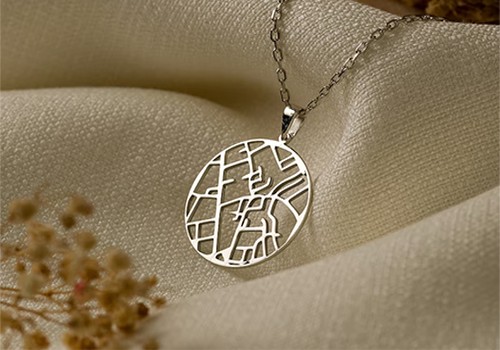
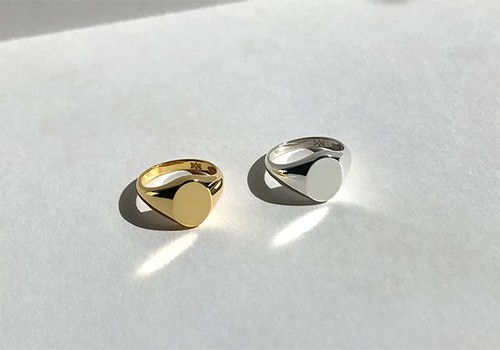
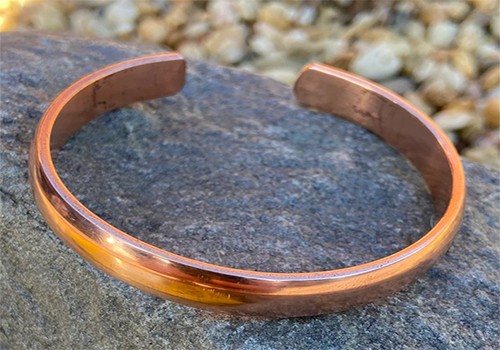
 © Copyright 2008-2021 Superb Electromachinery Co., Limited
© Copyright 2008-2021 Superb Electromachinery Co., Limited